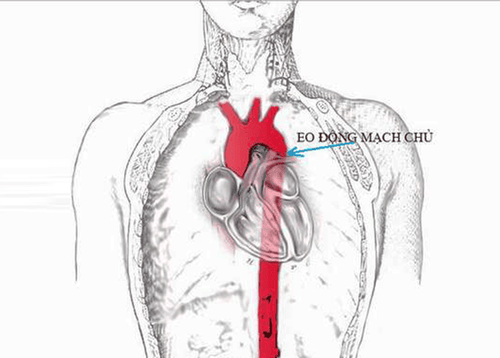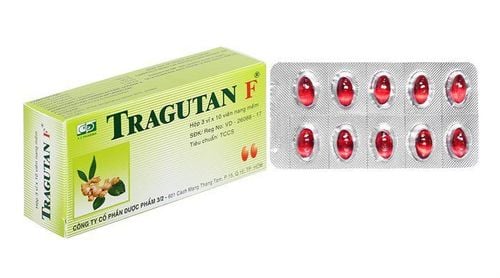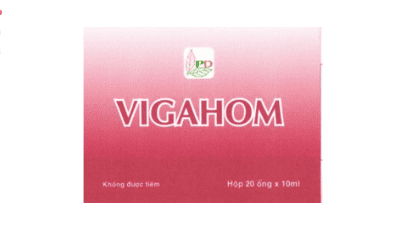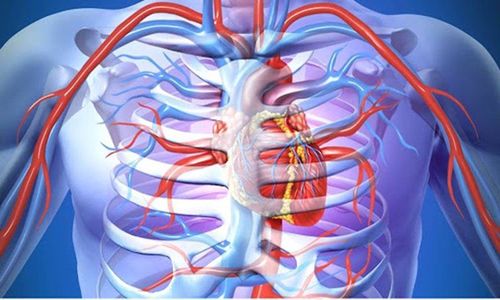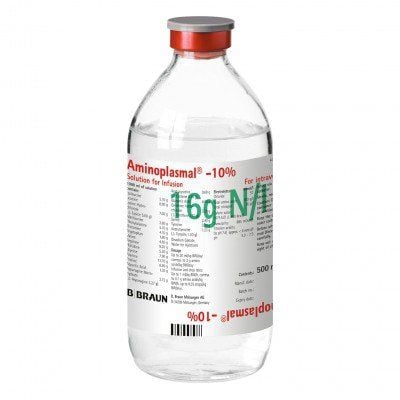This is an automatically translated article.
The article was written by MSc Ma Van Tham - and Doctor Nguyen Thai Ngoc Chau - Department of Pediatrics - Neonatology - Vinmec Phu Quoc International General Hospital.The ductus arteriosus is an important vascular tube connecting the main pulmonary artery and the aorta. Normally, the ductus arteriosus persists for 2-6 days after birth. If the tube does not close after a while, it is called a ductus arteriosus. A ductus arteriosus in premature infants (ductal persistence) occurs when the ductus arteriosus does not close completely after birth.
1. The effect of closing the ductus arteriosus of Ibuprofen - Indomethacin - Paracetamol
1.1 Indications for treatment of ductal closure Medical
Use Indomethacin for premature infants in the first 1-2 weeks - Small tube <2mm: tube can close on its own, need periodic ultrasound monitoring.
- Tube >3mm: use Indomethacin intravenous infusion initial dose:
+ 0.10mg/kg (children >48 hours)
+ 0.20mg/kg (children 2-7 days)
+ 0.25mg/kg (children >7 days)
The above dose may be repeated every 12 hours.
Full-term neonates Small ductus arteriosus: monitoring clinical and ultrasound developments. If there is no recurrence of pneumonia, physical retardation, heart failure, pulmonary hypertension .... surgery may be indicated at 3-6 months of age (pay attention to monitoring and prevention of inflammation). infective endocarditis).
Large ductus arteriosus: patients with pneumonia, heart failure, pulmonary hypertension unresponsive to medical treatment, need urgent surgery to ligation.
And the ductus arteriosus does not cause much pulmonary hypertension, the clinical picture is good: surgical intervention is usually done after 1 year.
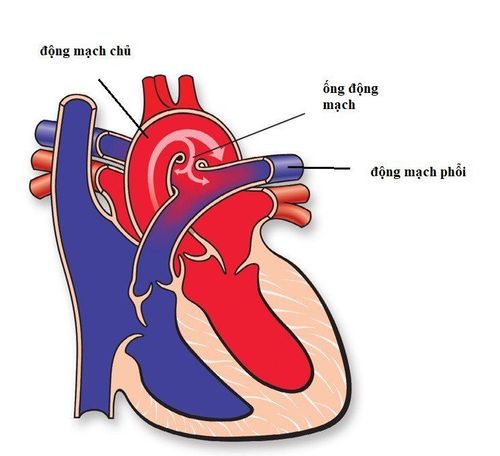
Hình ảnh mô tả trái tim còn ống động mạch
Block the ductus arteriosus with an instrument
Use a coil to occlude the ductus arteriosus when the apical diameter is < 3mm. Using Amplatzer when the tube diameter is >5mm, this procedure is increasingly being refined to become a routine alternative to surgery.
Surgical treatment
The surgery to ligation or cut the ductus arteriosus, is a long-standing method of treating ductal artery disease, only performed for cases with large ductus arteriosus that cannot be intervened with cardiac catheterization. .
Overall mortality from ductectomy is about 2%. In children with high pulmonary artery pressure, early surgery is recommended to avoid obstructive pulmonary disease.
Complications or sequelae after ductal surgery include:
ductal false aneurysm. Diaphragm paralysis due to severing of the phrenic nerve. Paralysis of the vocal cords. Pulmonary hypertension persists. Pleural emphysema.
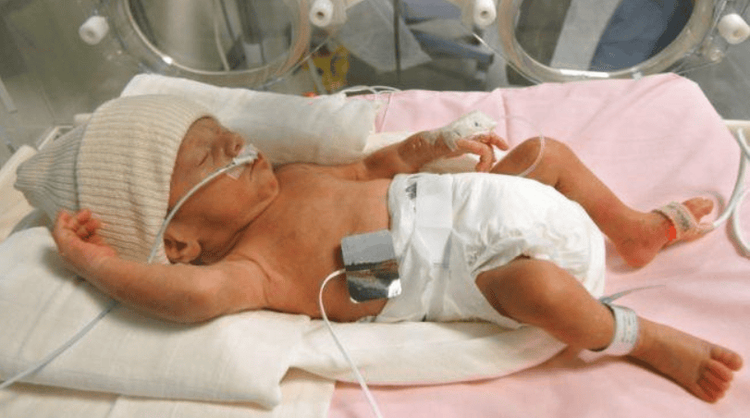
Sau phẫu thuật còn ống động mạch có thể xuất hiện một số biến chứng
1.2 Supportive therapy to close the ductus arteriosus + Keep the body temperature in the normal range.
+ Respiratory support.
Should breathe through a continuous positive airway pressure (CPAP) system or help with mechanical ventilation. Use of PEEP to improve gas exchange may improve systemic blood flow by reducing left-right shunts. Adopt a ventilator strategy that accepts elevated PCO2.
+ Maintain Hct around > 35%.
+ Limit transmission.
Infusion depends on the individual patient. Intravenous fluids during the first week of average > 160ml/kg/day increase the frequency of ductus arteriosus. Infusion during the first week of 110-130 ml/kg/day has not been shown to increase the incidence of ductus arteriosus and limit pulmonary edema in symptomatic preterm infants with active ductus arteriosus, especially those with severe respiratory disease. . In the late stage, when the patient presents with congestive heart failure or bronchopulmonary dysplasia accompanied by fluid restriction of about 120-150 ml/kg/day depending on the severity of the disease. If heart failure is present, treat with diuretics, digoxin.

Cần hạn chế truyền dịch
+ Avoid loop diuretics.
Because loop diuretics stimulate the kidneys to synthesize prostaglandin E2. In the early postpartum period, if diuretics are required to treat cases of fluid overload or pulmonary interstitial edema, thiazide diuretics (such as chlorothiazide) should be used instead of loop diuretics such as furosemide (recommended). report with evidence 1B).
1.3 Surgical closure of the ductus arteriosus is indicated for surgical closure of the ductus arteriosus when the patient remains symptomatic after one or two courses of COX inhibitor therapy or is contraindicated with a COX inhibitor (recommended with evidence 2B). However, drug therapy is still the first choice because surgical closure of the ductus arteriosus is associated with an increased risk of blood pressure fluctuations, respiratory disease, infection, intraventricular hemorrhage, and chylous effusion. pleural effusion, recurrent laryngeal nerve palsy, bronchopulmonary dysplasia, and death.
2. Complications of existing ductus arteriosus
Presence of ductus arteriosus in premature infants can lead to immediate complications such as congestive heart failure, acute pulmonary edema, pulmonary hemorrhage, intraventricular hemorrhage, necrotizing enterocolitis, and long-term complications such as: ventilator dependency, neonatal chronic lung disease (bronchopulmonary dysplasia), early ductal aneurysms, retinopathy of prematurity, growth retardation, and increased mortality.
Ductal persistence is common in premature infants, especially in those with endocardial disease. The existence of ductal ductus is also associated with many immediate and long-term diseases in premature infants such as pulmonary hemorrhage, acute pulmonary edema, congestive heart failure, intraventricular hemorrhage, necrotizing enterocolitis, and machine dependence. breathing, bronchopulmonary dysplasia in neonates, retinopathy of prematurity, growth retardation and increased mortality. Current treatment of existing ductus arteriosus includes supportive therapy, medical therapy, and surgical treatment.

Khoa nhi - Bệnh viện Vinmec
Pediatrics department at Vinmec International General Hospital is the address for receiving and examining diseases that infants and young children are susceptible to: viral fever, bacterial fever, otitis media, pneumonia in children, ... With modern equipment, sterile space, minimizing the impact as well as the risk of disease spread. Along with that is the dedication from the doctors with professional experience with pediatric patients, making the examination no longer a concern of the parents.
Customers can directly go to Vinmec Health system nationwide to visit or contact the hotline here for support.
Articles refer to the source: Ministry of Health, 2015. The existence of ductus arteriosus
SEE ALSO:
What is pulmonary hypertension? What about ductus arteriosus: Causes, symptoms, diagnosis, and treatment How does Chronic Obstructive Pulmonary Disease (COPD) affect the heart?





